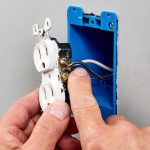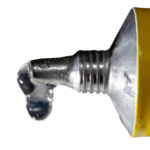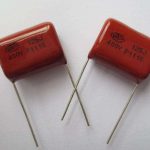
Introduction
Lighting is indeed an essential part of everyday life–whether it’s the lights in your home, streetlights, or headlights on vehicles–it helps prevent accidents and ensures safety. It’s something we often take for granted, but its importance becomes evident in situations where it is lacking or poorly designed. Work lights provide much-needed illumination in dimly lit areas, making it easier for professionals and hobbyists to perform their tasks safely and efficiently. This article discusses everything you need to know about work lights, exploring their standard types, brands, broad range applications, and selection tips to make an informed decision for your needs.
Understanding Work Lights: Exploring Their Significance
Work lights, also called task lights or site lights, are high-efficiency and powerful lights designed specifically for different workplaces to provide bright illumination for larger areas. These luminaires typically come fixed to flexible stands and get power either from electric generators or rechargeable batteries. Work lights are versatile, portable, and energy-efficient, making them cost-effective solutions for temporary or remote job sites. They are indispensable in multiple industries and settings where visibility is paramount–covering larger areas with bright illuminations and enhancing productivity and safety for workers by reducing accidents and injuries.
Corded vs. Cordless Work Lights: A Brief Overview
Corded work lights operate using electricity and feature a cord that needs to be plugged into an outlet. They offer consistent and uninterrupted lighting, making them ideal for long-term projects where a steady power supply is available. Cordless lights, on the other hand, are powered by rechargeable batteries, providing the advantage of portability, flexibility, and freedom from restrictive cords. They are perfect for jobs in areas without easy access to electrical outlets or for tasks that require mobility.
Most Popular Types of Work Lights: Uncovering Their Broad Range Varieties
Work lights are categorised into various forms based on their designs, mounting configurations, lighting sources, and intended applications. Some of the most common work light types include:
Portable Work Lights
Portable lights are versatile and can be easily moved to different locations, ensuring they can be directed precisely where needed. These lights are commonly used in construction sites, workshops, garages, outdoor events, emergencies, and other scenarios where temporary or additional lighting is required. Portable lights come in various forms, such as handheld, hanging, and tripod-mounted models.
- Handheld Lights – Handheld’s are portable, compact lighting devices designed to be held in your hand. They typically have a built-in handle or grip for easy carrying and manoeuvrability.
- Hanging Lights: Hanging’s are suspended from overhead structures or hooks and come with a built-in hanging mechanism, allowing them to be hung at a desired height. They are ideal for lighting up larger work areas, such as garages, workshops, or construction sites.
- Tripod Lights: Tripod’s are mounted on adjustable tripods or stands, providing stable and hands-free illumination. They are versatile and can be adjusted to the desired height and angle to direct light.
Fixed lights
Fixed work lights are permanently installed in specific areas, like garages, warehouses, or factories. They are connected to electrical systems and often chosen for tasks that require continuous. Fixed lights offer intense lighting and are more powerful and durable.
Rechargeable Lights
These cordless lights are powered by rechargeable batteries, making them highly portable. They are convenient for tasks in locations without easy access to power outlets.
LED Lights
LED lights are a type of lighting fixture that offers several advantages over traditional lighting technologies such as incandescent or fluorescent bulbs. They utilise light-emitting diodes (LEDs) as the source of illumination and are specifically designed for various work-related tasks and applications.
Fluorescent Lights
These lights are popular for their efficiency and are often used in garages, workshops, and industrial settings. They provide uniform illumination and are energy-efficient.
Incandescent Lights
While becoming less common due to energy inefficiency and shorter lifespan, incandescent work lights are still used in some applications. They provide warm, instant light.
Task-Specific lights
Task lights are designed to provide the right amount of light for specialised jobs. For instance, underhood work lights are engineered to illuminate the engine compartments of vehicles, while paint booth lights are tailored for precision work in painting and finishing applications.
Magnetic Base Lights
Work lights with magnetic bases are handy for attaching to metal surfaces, making them suitable for automotive repair, machine maintenance, and other tasks.
Floodlights
These lights emit a wide, even beam of light–illuminating large areas. Floodlights are commonly used in construction, outdoor events, and sports.
Spotlights
Spotlights produce a focused, intense beam of light–highlighting specific objects or areas. They are used in tasks requiring precision, like automotive repair or photography.
Telescoping Lights
These lights feature an extendable arm or mast to adjust the illumination height and angle, making them useful for tasks like construction, roadwork, and maintenance.
How to Choose the Best Work Lights: Tips for Selecting the Right Ones
Choosing the best work lights is critical in terms of making an informed decision for your specific needs in various applications. The following tips and considerations should be ascertained before buying a reliable work light for your workspaces:
- Consider Mobility
- Evaluate Power Sources
- Mounting Options
- Check Durability
- Size and Weight
- Brightness and Lumens
- Heat Emission
- Resistance Features
- Budget and Brand.
Best Work Lights to Buy: Discover the Leading Brands
Work lights offer ample illumination for various tasks and are readily available in the market from several leading brands. Some of the trusted brands known for their quality include DeWALT, Makita, Milwaukee, Bosch, Nightsearcher, and Stanley. Among these reputable manufacturers, DeWALT’s compact task lights and Nightsearcher’s LED rechargeable work light offer robust illumination during nighttime work.
Applications of Work Lights: Exploring Their Broad Range Uses
Work lights, as the name suggests, find versatile applications in a multitude of workplaces and settings, including:
- Construction Sites
- Auto Repair and Maintenance
- Emergency Response
- Mining Applications
- Agriculture
- Outdoor Events
- Photography and Film Production
- Home Improvement
- Camping and Outdoor Activities
- Search and Rescue Operations
- Manufacturing and Warehousing:
- Garages and Workshops
- Sports and Stadiums
- Power Outages and Emergencies.
Final Words
Work lights are indispensable tools for professionals and DIY enthusiasts across various dim workplace environments and industries–providing the illumination needed to work safely and efficiently. By understanding the different types, applications, features, and tips for selecting the right worklight, you can ensure that your workspace is well-lit, ultimately enhancing safety, efficiency, and overall work quality with confidence.





















